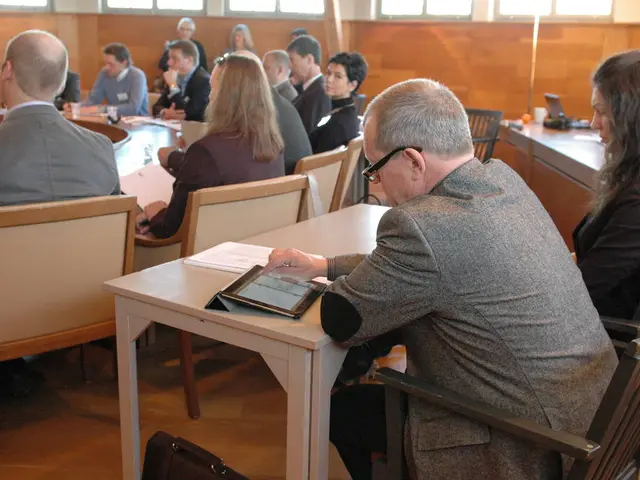YouTube Initiates AI-Based Age Verification Trial in United States
In a bid to protect children from inappropriate content, YouTube has launched a new AI-based age verification system in the United States. The system, which began limited rollout in August 2025, uses machine learning to analyze viewing patterns, account age, and video categories to estimate users' ages [1][4].
The system aims to provide age-appropriate experiences and comply with emerging global online safety laws such as the UK’s Online Safety Act [1][4][5]. It will automatically restrict access to mature content for estimated minors and apply additional content and advertising limitations [2][4].
If the system flags a viewer as under 18, YouTube will impose restrictions such as screen break reminders, privacy warnings, and limited video recommendations [3]. Users who are incorrectly flagged can verify their age to fix errors, indicating there is some mechanism to correct false positives [2].
While the exact accuracy metrics of the system are not publicly disclosed yet, as YouTube is still monitoring performance before wider deployment, critics have raised concerns about misclassification risks, privacy and ethical issues, and the possibility of users attempting to bypass the system [1].
Digital rights groups, such as the Electronic Frontier Foundation and the Center for Democracy & Technology, have expressed concerns that age verification could infringe on personal privacy and violate First Amendment protections on free speech [4]. Some services, such as YouTube, have been stepping up their efforts to verify users' ages, while others contend that the responsibility should primarily fall upon the two main smartphone app stores run by Apple and Google [5].
YouTube's director of product management, James Beser, stated that the company is proud to be at the forefront of introducing technology that delivers safety protections while preserving teen privacy regarding the age-verification system [2]. The initial tests will only affect a small portion of YouTube's U.S. audience [5].
It is important to note that YouTube has been owned by Google for nearly 20 years. Viewing YouTube videos without logging into an account triggers an automatic block on some content without proof of age.
In summary, YouTube’s AI age-verification system represents a technologically advanced effort to distinguish adults from minors in the U.S., but its precise effectiveness and impact remain under evaluation amid ongoing privacy debates and user concerns [1][2][4].
Key points:
- Machine learning analyzing viewing behavior, account age, video categories is used for age estimation.
- Limited U.S. rollout began in August 2025, with wider deployment to follow after monitoring user experience.
- Exact accuracy metrics are not publicly available; users can correct mistakes via ID verification.
- Critics have raised concerns about misclassification risks, privacy and ethical issues, and potential bypass attempts.
- Designed to align with online safety laws like the UK Online Safety Act and Australian proposals.
- Restricts mature content for minors, disables some features; concerns from creators/users exist.
- YouTube's director of product management, James Beser, is proud of the system's safety protections and teen privacy preservation.
- The initial tests will only affect a small portion of YouTube's U.S. audience.
Read also:
- IM Motors reveals extended-range powertrain akin to installing an internal combustion engine in a Tesla Model Y
- Amazon customer duped over Nvidia RTX 5070 Ti purchase: shipped item replaced with suspicious white powder; PC hardware fan deceived, discovers salt instead of GPU core days after receiving defective RTX 5090.
- Hyundai's 2025 IONIQ 9 luxury electric SUV receives a thorough evaluation, highlighting its abundant features and significant cost.
- Annual energy expenditure at the University Science Building slashes by $1.2 million, all the while adhering to environmental safety ventilation standards.




